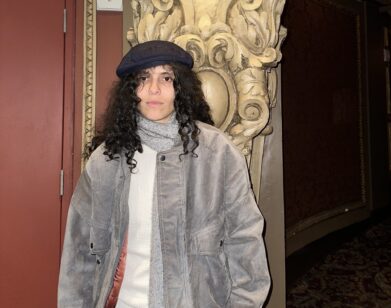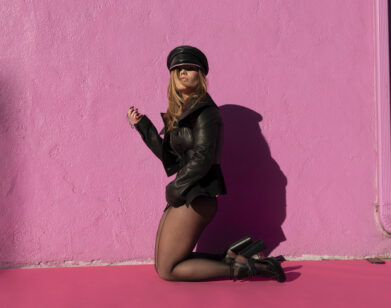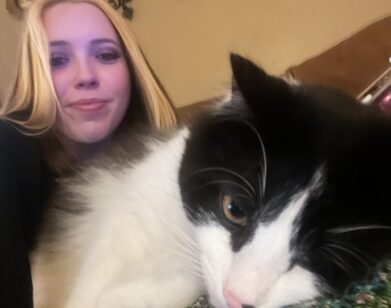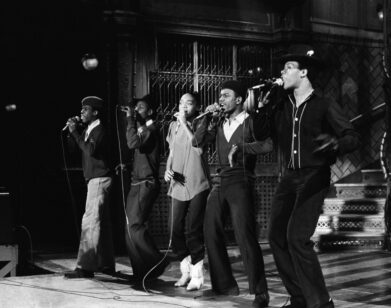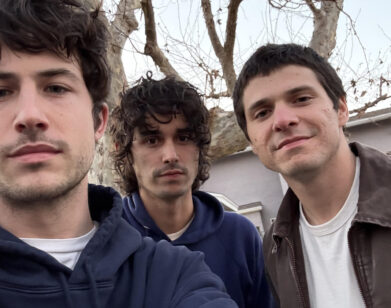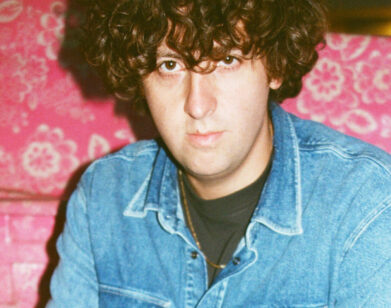Devendra Banhart is Not a Freak
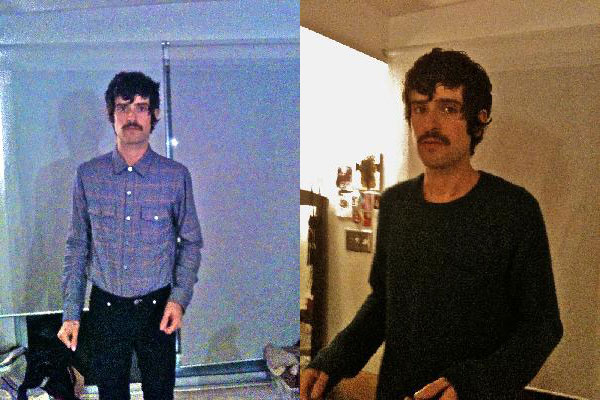
DEVENDRA BANHART. PHOTOS COURTESY OF ADAM TULLIE.
For a musician who started out on street corners playing for spare change, Devendra Banhart has come a long way. He’s an household name in the folk scene; he’s collaborated or performed with classic-rock icons like Donovan and Neil Young, and his influence has been felt in the worlds of film and art as well. Here are a few things you might not know about him: he’s surprisingly down-to-earth for someone named Devendra. He really hates the term “freak folk.” And yes, he regrets the velvet bellbottoms.
JIM TESTA: It seems like everything written about you focuses on the weird, so I thought it might be interesting to take a different tack. For one thing, your life represents a classic American success story—you were a homeless busker discovered playing music on a street corner, and today you’re an internationally famous recording artist on a major label who’s worked with some of the biggest names in the industry. Do you ever look back on the last 10 years and just think about everything that’s happened to you, and how things might have gone quite differently?
DEVENDRA BANHART: I’m so grateful for the way things went. I don’t live some opulent lifestyle, but compared to where I’ve been—there’s really no comparison. Certain people start out, or at least after a couple shows, or a demo being passed around, or due to nepotism or luck or a willingness to be an A&R person’s guinea-pig puppet product, but they start out with a booking agent, a label, a manager, and an opening slot on some giant tour. I never had that, and I’m more grateful for that than having a home. I’m extremely beyond grateful to not be homeless anymore, but the point I’m trying to make is that if things had worked out some other way, I wouldn’t have known what it’s like to book my own tour, play for no one, send demos out to labels, and therefore wouldn’t appreciate now having those things. I can’t complain, but I do—oh, I do…
TESTA: You have this reputation for serenity, but I’m wondering if there were ever times you had stage fright or felt like you were in a situation that was just totally over your head.
BANHART: Oh, completely. In fact, there are a couple of shows that still wake me up at night, shivering, spewing sweat and regret. Two events stand out. One was playing an anti-war, bring-our-troops-home benefit. I was really honored to have been asked to play, and I wrote a song the previous night specifically for the show: a topical (which for me is a rare thing) song about the war. It was simple (like my other songs aren’t, ha!) and about—at least in my eyes—how no matter how badly we can all join together and say, “We want peace,” it’s the people that are actually fighting, on both sides, that want it the most.
Unfortunately, it didn’t go down very well and came off as awkward and unprepared; our whole set seemed that way. It was a bummer and I wish I had had it more together. I also threw a mic once, out of, I don’t know what, some very selfish frustrations… and it missed the sound guy by an inch. I threw it as hard as I possibly could, and it would have done serious damage. I brought the guy an apology note and some mangos the next day, but it still keeps me up. Jesus, the list goes on, but I’ll stop here. I don’t know if this even answers the question. In over my head? Gilberto Gil asked me and Rodrigo to come up and sing a song with him at the Hollywood Bowl. Of course it was the one song neither of us knew! But we somehow bumbled through that one without anyone noticing; except I’m sure everyone did notice, but Gilberto is so charismatic that no one cared. Ha! Awestruck? Caetano (Veloso) and Neil (Young) did not disappoint, their presence was like being in the Rothko Chapel.
TESTA: This is the 800-pound gorilla in the room, so let’s just get it out of the way. What do you think of the term “freak-folk” and how did you come to be associated with it?
BANHART: Ok, thank you so much for asking this question. How to proceed? First, let me say that I don’t know a single person that has ever been called any of the horrid freak-folk-isms, who has ever said, “Yep! That’s what we play! Freak folk!” Not a single person that I know, and it’s been quite some time now, has ever referred to their music by that label… Today, I really don’t care, I just don’t want anyone to get the impression I had anything to do with that term or at any point adopted that label. I admit I’ve made bazillions of mistakes—holy moly, I’m guilty of velvet bellbottoms, I admit it! But that term? I never, not even jokingly, expressed anything but disdain for it. I’ve been misquoted many times regarding the whole “freak folk” thing; five or six years ago, The New York Times ran something about me saying “It’s cool—you have to call it something.”
TESTA: Being active over the last 10 years, you’ve watched the growth of the Internet and the changes in the music industry, yet you still decided to align yourself with a major corporation rather than an independent label. What can a label like Warner Bros. offer an artist whose work is outside the mainstream in 2010? How has your association been with them so far?
BANHART: We signed with Warner after making the (very mainstream-sounding, funnily enough) record. Why? Because they treated us the way we were hoping and expecting the indies to treat us! Shocking, isn’t it? That isn’t to say all majors are suddenly super-cool, artist-friendly mom-and-pop businesses. One not-to-be-mentioned major said they would sign me if I worked with a team of songwriters to help me finish songs, ha! Of course, in hindsight, I should’ve done it just to see what that would have been like.
But Warner—who has one of my favorite bands of all time, Built to Spill—was completely clear and open and human, and said, quite literally, “Do what you want, we’ll put it out.” This next album will probably be the last one on a major and I guarantee it won’t sound anything like the last one. Even though to me, they all sound sort of the same.
TESTA: What are some of your current art projects, and how much does that side of your personality guide what you do?
BANHART: I’ve been doing visual stuff for as long as I’ve been making records; in fact, for longer. I’ve drawn (or in the regrettable case of Cripple Crow, collaged) all my covers, hand-painted the booklets, etc. The aural aspect is just one aspect of the complete piece, the visual being the other and just-as-significant aspect. Right now, with art, I am in a group show at MOCA that opens in a few days. It’s Jeffrey Deitch’s first show as curator, and I’m beyond excited. I’ll have drawings and paintings in it, but there will also be a Doug Aitken “happening” that will involve me, Beck, and Caetano Veloso. There are also two solo shows in Europe next year and little group shows here and there, so I’m busy.
DEVENDRA BANHART’S EXHIBITION “SEJA MARGINAL SEJA HEROI” WILL RUN AT AS IF GALLERY IN MANHATTAN FROM NOVEMBER 6 THROUGH 27, 2010. FOR MORE ON DEVENDRA BANHART, VISIT HIS WEBSITE.

